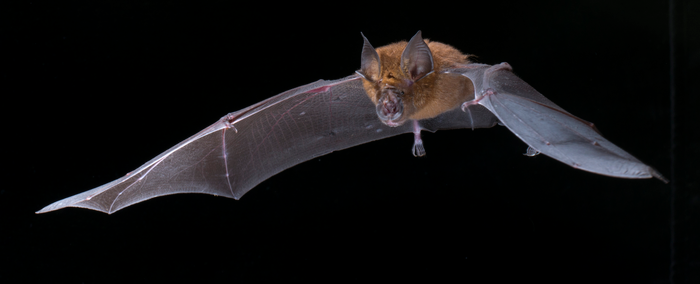Using artificial intelligence (AI), an international research team guided by researchers at Georgetown University has been able to forecast which viruses could infect humans (like SARS-CoV-2, the virus that triggered the COVID-19 pandemic), which animals host them and where they could emerge.
 Rhinolophus rouxi, which inhabits parts of South Asia, was identified as a likely but undetected betacoronavirus host by the study authors. (Image Credit: Brock and Sherri Fenton).
Rhinolophus rouxi, which inhabits parts of South Asia, was identified as a likely but undetected betacoronavirus host by the study authors. (Image Credit: Brock and Sherri Fenton).
Their collection of predictive models of probable reservoir hosts, reported in the January 10th issue of The Lancet Microbe, was corroborated in an 18-month project to ascertain specific bat species likely to contain betacoronaviruses, the group that includes viruses similar to SARS.
“If you want to find these viruses, you have to start by profiling their hosts — their ecology, their evolution, even the shape of their wings,” explains the study’s senior author, Colin Carlson, Ph.D., an assistant research professor in the Department of Microbiology & Immunology and a member of Georgetown’s Center for Global Health Science and Security at Georgetown University Medical Center. “Artificial intelligence lets us take data on bats and turn it into concrete predictions: where should we be looking for the next SARS?”
Despite worldwide investments in disease surveillance, it still is challenging to identify and track wildlife reservoirs of viruses that could one day infect humans. Statistical models are progressively being employed to rank which wildlife species to sample in the field, but the predictions being produced from any one model can be very uncertain.
Researchers also seldom monitor the failure or success of their predictions after they publicize them, making it difficult to learn and create better models in the future. Together, these limitations denote that there is high ambiguity in which models may be ideally suited for the job.
This new research proposes that the hunt for closely-related viruses could be significant, with more than 400 bat species worldwide predicted to contain betacoronaviruses, a large category of viruses that comprises those accountable for SARS-CoV (the virus that resulted in the 2002-2004 outbreak of SARS) and SARS-CoV-2 (the virus that causes COVID-19).
Although the source of SARS-CoV-2 still is unclear, the spillover of other viruses from bats is an emergent issue because of factors like climate change and agricultural expansion.
Greg Albery, Ph.D., a postdoctoral fellow in Georgetown’s Biology Department, says COVID-19 gave the motivation to accelerate their research.
This is a really rare opportunity. Outside of a pandemic, we’d never learn this much about these viruses in this small a timeframe. A decade of research has been collapsed into about a year of publications, and it means we can actually show that these tools work.
Greg Albery, Ph.D., Postdoctoral Fellow, Department of Biology, Georgetown University Medical Center
In the first quarter of 2020, the research team engineered eight different statistical models that forecast which kinds of animals could contain betacoronaviruses. Then, for more than a year, the researchers followed up on 40 new bat hosts of betacoronaviruses to confirm preliminary predictions and dynamically upgrade their models.
The team learned that models channeling data on bat ecology and evolution did very well at predicting new hosts. In contrast, advanced models from network science that employed high-level mathematics — but less biological data — did approximately as well or worse than estimated at random.
One of the most important things our study gives us is a data-driven shortlist of which bat species should be studied further. After identifying these likely hosts, the next step is then to invest in monitoring to understand where and when betacoronaviruses are likely to spill over.
Daniel Becker, Ph.D., Assistant Professor of Biology, University of Oklahoma
Carlson says that the team is currently partnering with other scientists worldwide to test bat samples for coronaviruses according to their predictions.
If we spend less money, resources, and time looking for these viruses, we can put all of those resources into the things that actually save lives down the road. We can invest in building universal vaccines to target those viruses, or monitoring for spillover in people that live near bats. It’s a win-win for science and public health.
Colin Carlson, Ph.D., Senior Study Author and Assistant Research Professor, Department of Microbiology and Immunology, Georgetown University Medical Center
Journal Reference:
Becker, D. J., et al. (2022) Optimising predictive models to prioritise viral discovery in zoonotic reservoirs. The Lancet Microbe. doi.org/10.1016/S2666-5247(21)00245-7.